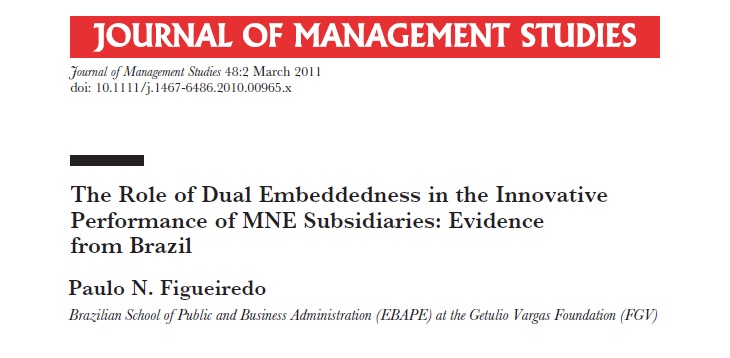
This paper explores variability across a set of subsidiaries in a given local context and the same industry in terms of innovative performance as an outcome of the manner and extent to which they embed within both corporate (internal) and local (external) counterparts. By drawing on fieldwork evidence of seven subsidiaries operating in Brazil (1996–2007) it was found that: (1) subsidiaries that were able to develop knowledge intensive linkages with specific internal and external counterparts simultaneously and based on continually increased frequency and improved quality achieved higher innovative performance levels than
subsidiaries that developed such linkages with limited frequency and unchanged quality over time; and (2) some counterparts and linkages were more effective than others in terms of contributing to the subsidiaries’ innovative performance. By drawing on a novel approach that explores dual embeddedness and its impacts on differences across a set of subsidiaries in terms of innovative performance over time, this paper extends our understanding of embeddedness as part of strategic asset-seeking strategies. It also provides a basis to deepen the analysis of the nuances of multiple embeddedness and its implications for the subsidiary’s competitive performance.
Figueiredo, P. N. (2011). The role of dual embeddedness in the innovative performance of MNE subsidiaries: Evidence from Brazil. Journal of Management Studies 48 (2): 417-440 DOI: https://doi.org/10.1111/j.1467-6486.2010.00965.x